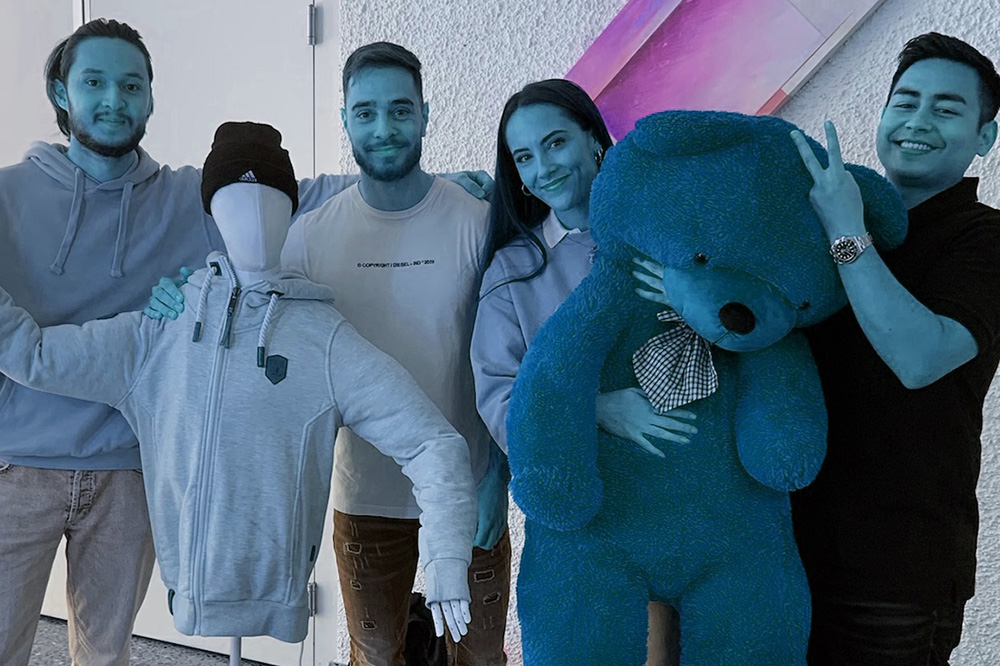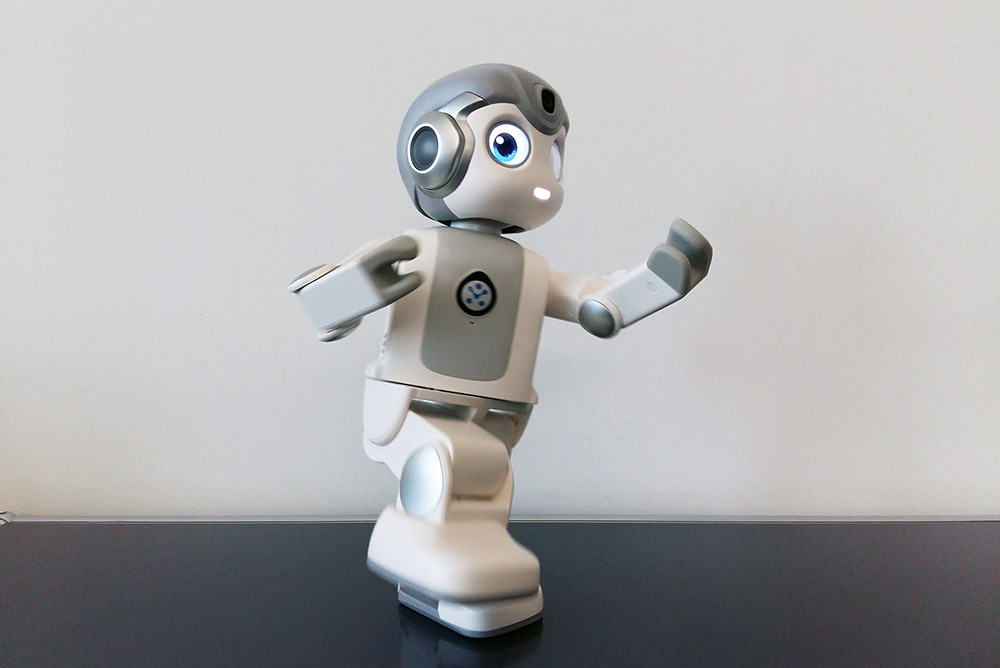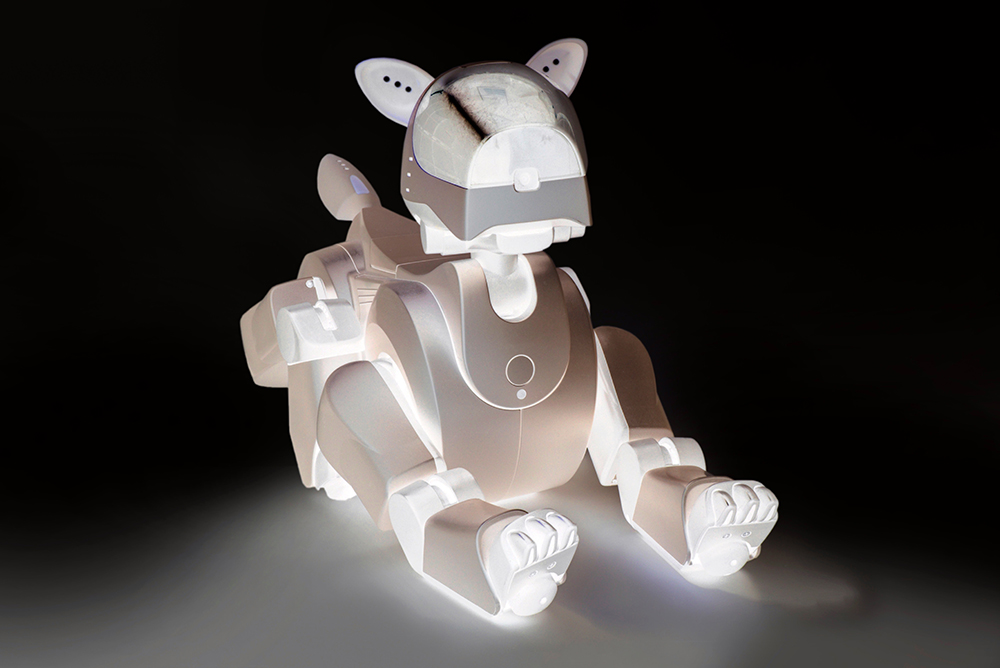From March 27-29, 2023, the AAAI 2023 Spring Symposia will feature the symposium “Socially Responsible AI for Well-being” by Takashi Kido (Teikyo University, Japan) and Keiki Takadama (The University of Electro-Communications, Japan). The venue is usually Stanford University. For staffing reasons, this year the conference will be held at the Hyatt Regency in San Francisco. On March 28, Prof. Dr. Oliver Bendel will present the paper “Increasing Well-being through Robotic Hugs”, written by himself, Andrea Puljic, Robin Heiz, Furkan Tömen, and Ivan De Paola. From the abstract: “This paper addresses the question of how to increase the acceptability of a robot hug and whether such a hug contributes to well-being. It combines the lead author’s own research with pioneering research by Alexis E. Block and Katherine J. Kuchenbecker. First, the basics of this area are laid out with particular attention to the work of the two scientists. The authors then present HUGGIE Project I, which largely consisted of an online survey with nearly 300 participants, followed by HUGGIE Project II, which involved building a hugging robot and testing it on 136 people. At the end, the results are linked to current research by Block and Kuchenbecker, who have equipped their hugging robot with artificial intelligence to better respond to the needs of subjects.” More information via aaai.org/conference/spring-symposia/sss23/.
Little Teacher
Alpha Mini is a social robot characterized by small size (and thus good transportability) and extensive natural language and motor skills. It can be used in school lessons, both as a teacher and tutor and as a tool with which to program. On March 8, 2023, a new project started at the School of Business FHNW, in which Alpha Mini plays a leading role. The initiator is Prof. Dr. Oliver Bendel, who has been researching conversational agents and social robots for a quarter of a century. Andrin Allemann is contributing to the project as part of his final thesis. Alpha Mini will be integrated into a learning environment and will be able to interact and communicate with other components such as a display. It is to convey simple learning material with the help of pictures and texts and motivate the children through gestural and mimic feedback. So this is a little teacher with great possibilities. In principle, it should comply with the new Swiss federal law on data protection (neues Datenschutzgesetz, nDSG). The project will last until August 2023, after which the results will be published.
The HUGGIE Project II
A large survey on hugging robots was already conducted in 2020 (HUGGIE Project I). The results were published by Leonie Stocker, Ümmühan Korucu, and Oliver Bendel in the book chapter “In den Armen der Maschine” (“In the arms of the machine”) in the Springer volume “Soziale Roboter” (“Social Robots”) . In the summer of 2022, another project was announced at the School of Business FHNW, called HUGGIE Project II in distinction to the previous project. A team of four was recruited, with Andrea Puljic, Robin Heiz, Furkan Tömen, and Ivan De Paola. The task was to build and test a hugging robot called HUGGIE. In doing so, the results of HUGGIE Project I were to be used as a basis. In particular, it was to be determined whether a robotic hug contributes to well-being and health and whether voice and vibration as a simulation of the heartbeat as well as scent increase the acceptance of the hug by a robot. Thus, indications from the survey in HUGGIE Project I were included. Furthermore, hugs with a giant stuffed animal named Teddy took place for comparison. The results show that people benefit from robotic hugs and that these can increase their well-being and health as a result. There was clear evidence of this in the pretest, and still sufficient evidence in the main test. However, some already have an aversion to robotic hugs in their imagination – as HUGGIE Project I revealed – which in turn some also showed in reality (HUGGIE Project II). Warmth and softness of body and arms are important. This was already proven by the research of Alexis E. Block and Katherine J. Kuchenbecker. Voice, vibration, and scent were found to be less relevant. However, there is significant indication that a female voice can increase acceptance and therefore needs to be further explored and adapted in this context. The findings were summarized in a paper and submitted to an international conference (Photo: Furkan Tömen).
Hugged by a Robot
The HUGGIE project at the School of Business FHNW is moving forward. Under the supervision of Prof. Dr. Oliver Bendel, the team of four (Andrea Puljic, Robin Heiz, Ivan De Paola, Furkan Tömen) will test a hug doll on users until January 2023. It is already known that warmth and softness of the arms and body are desired. Now the team is investigating whether, for example, voice, vibration and smell also increase acceptance. The key question of the practical project is: Can a social robot help increase physical and mental well-being through hugs and touches, and what factors should be taken into account? The basis of HUGGIE is a dressmaker’s dummy. Added to this are clothing, a warming element, a vibration element, and an audio system. In addition, a scent is applied. The arms are moved by invisible strings so that active hugs are possible. Overall, the impression of a hugging robot is created. A trial run with 65 test persons took place in a Swiss company in November 2022. They were hugged by HUGGIE and a giant teddy bear. Based on the results and impressions, the questionnaire and the test setup will be improved. From the end of November 2022, the project will enter its final phase, with implementation and evaluation of the tests.
The Uncanny Robot CyberOne
Xiaomi – a Chinese manufacturer of consumer electronics – introduced CyberOne in August 2022. It is a humanoid social robot. It has a head, but no face, and for that reason alone it looks creepy. The company writes on its website: “As the newest member of Xiaomi’s Cyber series, joining last year’s quadruped robot Cyberdog, CyberOne is fitted with advanced arms and legs, supports bipedal-motion posture balancing, and reaches a peak torque of up to 300Nm. Also demonstrated was the ability to detect human emotion, advanced vision capabilities, and functionality allowing it to create three-dimensional virtual reconstructions of the real world, alongside a host of other advanced technologies.” (Xiaomi, August 11, 2022) Via www.youtube.com/watch?v=CJhneBJIfOk you can watch a video with CyberOne. Overall, the demonstration seems unconvincing. The missing face has already been mentioned. The robot makes sounds that are more appropriate for a small toy and entertainment robot. In addition, it moves stiffly and slowly. You can say that the list of uncanny robots has been expanded with CyberOne. Maybe the company can improve the prototype and make it more compelling.
ARTE about Social Robots
Since January 20, 2022, the ARTE broadcast “Werden wir Roboter lieben?” (“Will we love robots?”) has been available online. On February 19, 2022, the classic version will follow on the German-French culture channel. Tanja Küchle has masterfully presented and implemented a difficult topic. “According to estimates, there are now more than 1.7 million robots with social characteristics worldwide. They care for, educate, help, and entertain us. There have also long been highly engineered sex robots. But can these machines actually develop feelings – or even feel love?” (Website ARTE, own translation) Prof. Dr. Peter Robinson, computer scientist at the University of Cambridge, Dr. Hooman Samani, roboticist at the University of Plymouth, Prof. Dr. Martin Fischer, cognitive psychologist at the University of Potsdam, Prof. Dr. Catrin Misselhorn, philosopher at the University of Göttingen, and Prof. Dr. Oliver Bendel, information and machine ethicist at the School of Business FHNW, have their say. Oliver Bendel has been researching conversational agents and social robots for more than 20 years and has published the Springer book “Social Robots” at the end of 2021. More information on the program via www.arte.tv/de/videos/101938-004-A/42-die-antwort-auf-fast-alles/ (photo: ARTE).
Social Robots at Stanford University
The paper “Should Social Robots in Retail Manipulate Customers?” by Oliver Bendel and Liliana Margarida Dos Santos Alves was accepted at the AAAI 2022 Spring Symposia (Stanford University). The two authors will present it at the end of March 2022 at the symposium “How Fair is Fair? Achieving Wellbeing AI”. From the abstract: “Against the backdrop of structural changes in the retail trade, social robots have found their way into retail stores and shopping malls in order to attract, welcome, and greet customers; to inform them, advise them, and persuade them to make a purchase. Salespeople often have a broad knowledge of their product and rely on offering competent and honest advice, whether it be on shoes, clothing, or kitchen appliances. However, some frequently use sales tricks to secure purchases. The question arises of how consulting and sales robots should ‘behave’. Should they behave like human advisors and salespeople, i.e., occasionally manipulate customers? Or should they be more honest and reliable than us? This article tries to answer these questions. After explaining the basics, it evaluates a study in this context and gives recommendations for companies that want to use consulting and sales robots. Ultimately, fair, honest, and trustworthy robots in retail are a win-win situation for all concerned.” More information about the AAAI 2022 Spring Symposia is available here.
Astro Comes to the World
During an online event on 28 September 2021, Amazon unveiled its first home robot. Astro is as small as a vacuum cleaner and has a display that forms its head. It is supposed to take over household tasks – as reported by SPIEGEL ONLINE. It can drive around the house when the residents are away, sending them live images. It should be able to recognize the sound of shattering glass and alarm signals from smoke detectors – so it would have functions familiar from security robots. Furthermore, it should be possible to keep in touch with older relatives via Astro. Its camera can be extended so that it is at eye level and can also look over obstacles. Of course, the robot also offers an interface to Alexa. Unlike Elon Musk’s Optimus, Astro is already a product. However, it is a product that can initially only be purchased in the US and only after an application.
The Idea of a Tesla Bot
Elon Musk presented the idea of a humanoid robot that – according to Manager Magazin – could take on dangerous, repetitive or boring tasks in the future. The Tesla Bot will be about five feet eight inches (just under 1.73 meters) tall, weigh 57 kilograms, and be able to do numerous jobs, from putting screws on cars to picking up groceries at the store – this is what the German magazine reports. It will be equipped with eight cameras and a full self-driving computer, and will use the same tools Tesla uses in its cars (Manager Magazin, 20 August 2021). According to the announcement, the robot will be able to take over physical work. But that’s exactly what service robots are struggling with at the moment, especially humanoid models. The visualization hardly allows any conclusions to be drawn about the capabilities of the prototype, which is to be available as early as 2022. Eyes and mouths could appear on a large display in the head area and mimic abilities could be implemented. When it is turned off – as seen in the video – the robot appears creepy and unapproachable. Arms and feet are unlikely to be suitable for carrying the body in this form. Joints can also only be seen in rudimentary form. Overall, it is unclear why Tesla, of all companies, should close the gaps that are still present at Sony, SoftBank and Boston Dynamics even after many years.
From AIBO to CyberDog
Xiaomi has unveiled CyberDog, a four-legged robot that could be a competitor to Sony’s AIBO. According to the Chinese company, it is calibrated with servo motors that translates into great speed, agility, and a wide range of motion. It is able to conduct complicated actions such as backflips. “To fully model biological organisms, CyberDog is equipped with 11 high-precision sensors which provide instant feedback to guide its movements. This includes touch sensors, cameras, ultrasonic sensors, GPS modules, and more, giving the CyberDog enhanced capability to sense, analyze, and interact with its environment.” (Mi Blog, 10 August 2021) Unlike AIBO, CyberDog looks rather frightening. This is because it does not have an actual head. In this it is comparable to Spot from Boston Dynamics. Nevertheless, it is intended to function as a pet substitute. “To add to its pet-like nature, users can use voice assistants to command and control CyberDog by setting a wake word, or simply use its accompanying remote and smartphone app. CyberDog can be called on for the most unique tasks, and the ways in which it can be interacted with holds unforetold possibilities.” (Mi Blog, 10 August 2021) The future will show whether users want to become friends with CyberDog.









